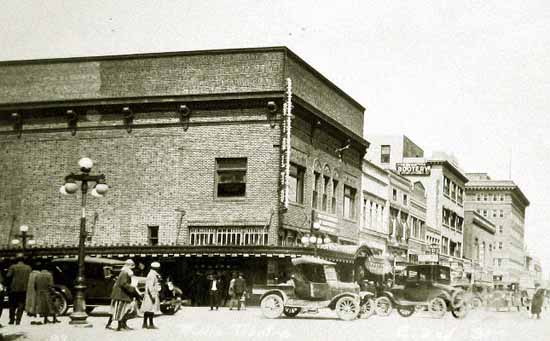
Realto Theatre, 1926.
The Realto was originally intended to be a vaudville theatre, but was converted to motion pictures in 1922.
Its opening film was William C. de Mille's "Nice People" with accompaniment by the Chicago
Netto Ladies Orchestra. In 1928, the theatre converted to
talkies.
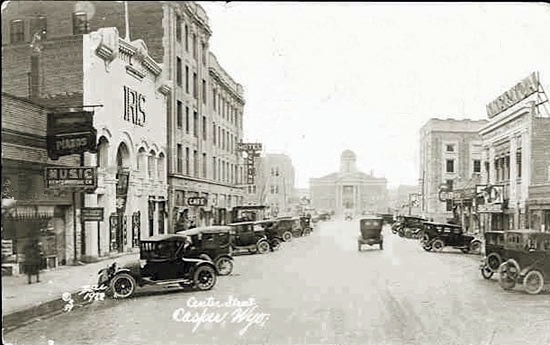
Iris Theatre, 1922
The Iris was constructed by William Roy Sample in 1912. The theatre had 733 seats. Previously, he had operated the Bell
Theatre in the old Casper Town Hall. During the days of silent movies, the Iris accompanied the
action on the screen with the Iris Orchestra. In the early 1920's the theatre presented in addition to a
feature film, musical reviews complete with soft shoe dancing, comedy specialties, and "big shoe" dancing.
Occasionally the review would also be presented on Tuesday night. The Iris Orchestra, conducted by Sample, also played for dances
on Wednesday and Saturday nights in the first floor ballroom of the Masonic
Temple. The ballroom was converted to a lodge room in 1964. By 1922 both the Lyric and the America had been
acquired by the Bishop-Cass chain out of Denver. Admission to the Iris for all
seats at the time of the above photo was 40¢. At the time, in addition to the
America, were two other theatres, the Columbia which advertised as "Casper's Family Theatre" located on West First Street off of
Center, and the Wyoming where seats ran from 10¢ to 25¢.
Later with the opening of the "New Lyric Theatre," later known as the Rialto, the Iris became the Rex Theatre.
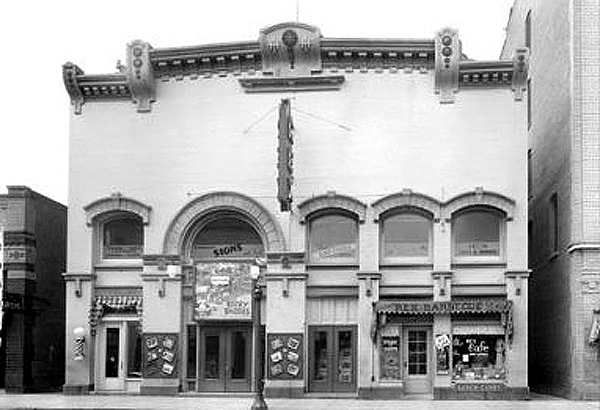
Rex Theatre, 1935. Photo by Thomas G. Carrigen.
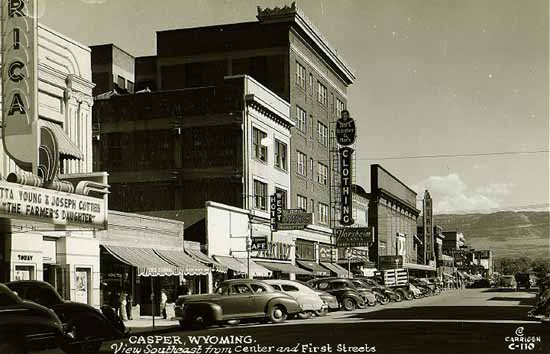
Center Street, 1947. Photo by Thomas G. Carrigen.
On the left is the art deco America Theatre also owned by William Sample prior to his death. Further down the street is the
Rialto with the false parapet.
.
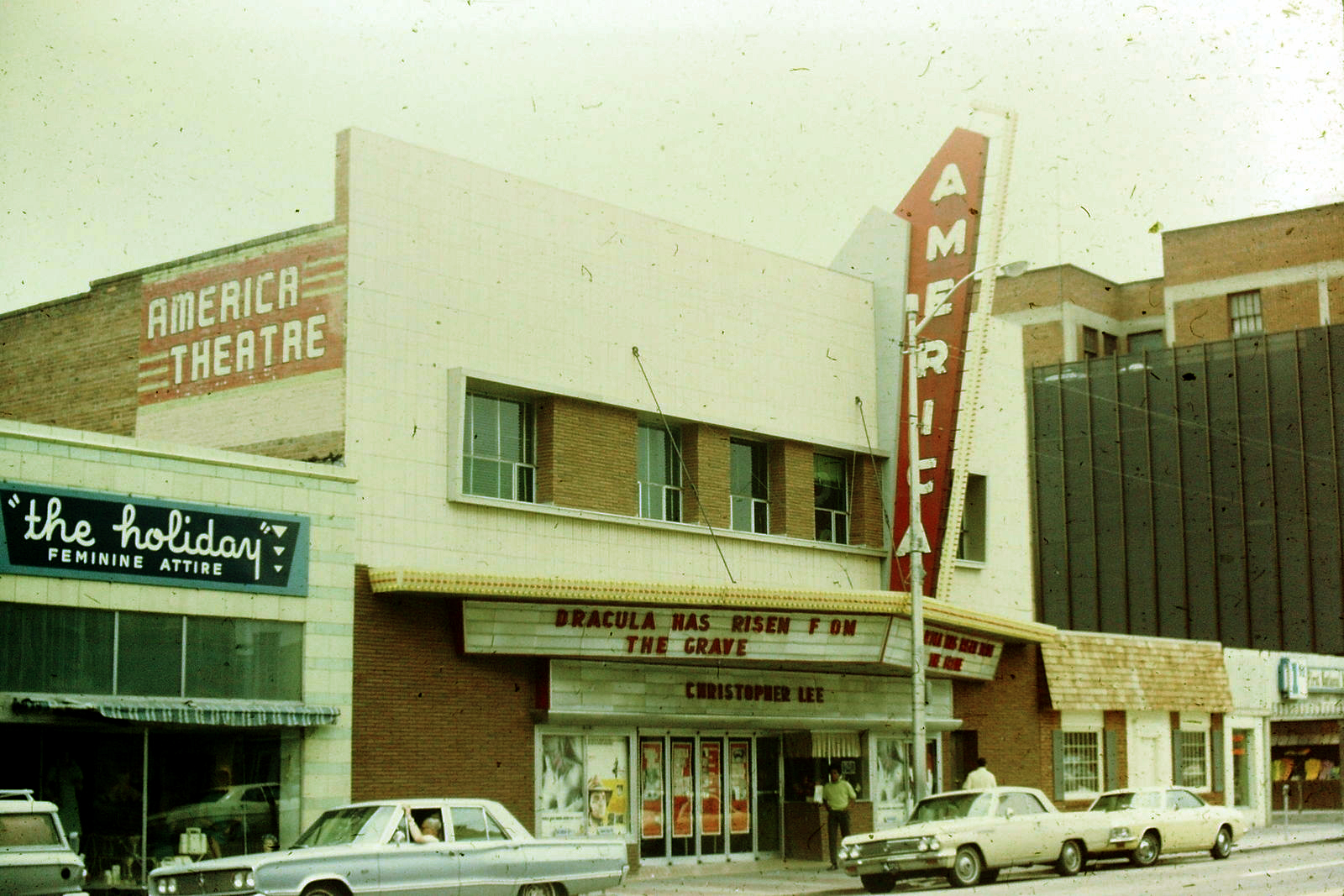
America Theatre, 1969.
As indicated by the photos, over the years the various theatres have been remodeled. In Casper, prior to
the advent of "talkies," the theatres relied on orchestras rather that the giant theatre organ.
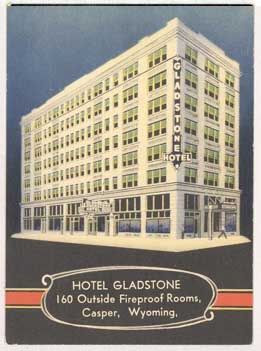 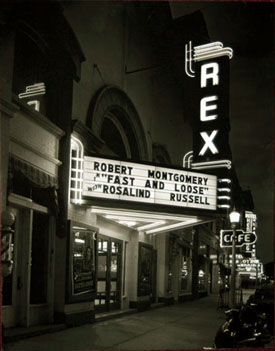
Left, Advertising Photo, Hotel Gladstone;
Right, Rex Theatre, 1939. Photo by Thomas Carrigen
Following World War I, Thomas G. Carrigen (1896-1967) took a job as a traveling washing machine saleman and was in Casper when he was let go. He obtained
employment as a draftsman. Subsequently he was employed as a projectionist in one of the theatres. In 1922, with his wife, he opened a
photgraphy studio on Center Street.
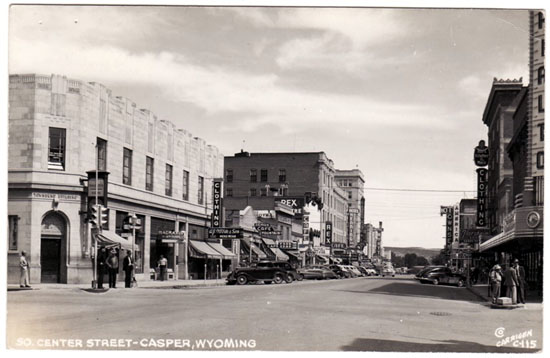
Center Street, approx. 1947. Photo by Thomas Carrigen.
On the left hand side of the street is the Rex. Directly across the street is the America Theatre. On the exteme
right hand side of the photo is the Rialto. During Saturday Matinees, children were admitted to the Rex for ten cents.
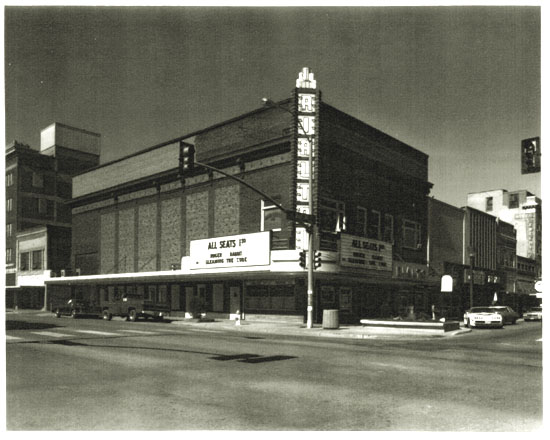
Southwest corner of the Rialto Theatre, approx. 1986. National Park Service Photo.
The Realto is now on the National Register.
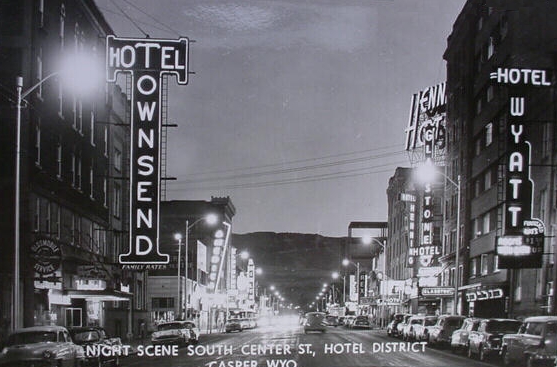
Center Street, approx. 1956. Photo by Thomas Carrigen.
Music this page: "Take your Girlie to the Movies" as performed for Mercury Records by
Pave Pritcher and his Kornie Klowns.
Next page: Casper continued.
|